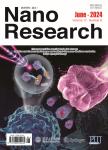Engineering nanoporous and solid core-shell architectures of lowplatinum alloy catalysts for high power density PEM fuel cells
作者机构:Institute of Materials ResearchShenzhen International Graduate SchoolTsinghua UniversityShenzhen 518055China
出 版 物:《Nano Research》 (纳米研究(英文版))
年 卷 期:2022年第15卷第7期
页 面:6148-6155页
核心收录:
学科分类:08[工学] 0805[工学-材料科学与工程(可授工学、理学学位)] 080502[工学-材料学] 0703[理学-化学] 0702[理学-物理学]
基 金:supported by the National Natural Science Foundation of China(Nos.52173222,51622103 and 22109088) the Local Innovative and Research Teams Project of Guangdong Pearl River Talents Program(No.2017BT01N111) Key Area Research and Development Program of Guangdong Province(No.2020B0909040003) Shenzhen Science and Technology Innovation Committee(Nos.WDZ20200819115243002 and JCYJ20190809172617313).
主 题:low-platinum alloy catalyst nanoporosity proton-exchange-membrane fuel cells power density triple-phase boundary
摘 要:Low-platinum(Pt)alloy catalysts hold promising application in oxygen reduction reaction(ORR)electrocatalysis of protonexchange-membrane fuel cells(PEMFCs).Although significant progress has been made to boost the kinetic ORR mass activity at low current densities in liquid half-cells,little attention was paid to the performance of Pt-based catalysts in realistic PEMFCs particularly at high current densities for high power density,which remains poorly understood.In this paper,we show that,regardless of the kinetic mass activity at the low current density region,the high current density performance of the low-Pt alloy catalysts is dominantly controlled by the total Pt surface area,particularly in low-Pt-loading H_(2)–air PEMFCs.To this end,we propose two different strategies to boost the specific Pt surface area,the post-15-nm dealloyed nanoporous architecture and the sub-5-nm solid core–shell nanoparticles(NPs)through fluidic-bed synthesis,both of which bring in comparably high mass activity and high Pt surface area for large-current-density performance.At medium current density,the dealloyed porous NPs provide substantially higher H_(2)–air PEMFC performance compared to solid core–shell catalysts,despite their similar mass activity in liquid half-cells.Scanning transmission electron microscopy images combined with electron energy loss spectroscopic imaging evidence a previously unreported“semi-immersed nanoporous-Pt/ionomerstructure in contrast to a“fully-immersed core–shellPt/ionomerstructure,thus favoring O_(2) transport and improving the fuel cell performance.Our results provide new insights into the role of Pt nanostructures in concurrently optimizing the mass activity,Pt surface area and Pt/Nafion interface for high power density fuel cells.



